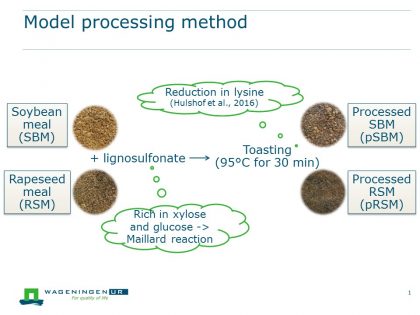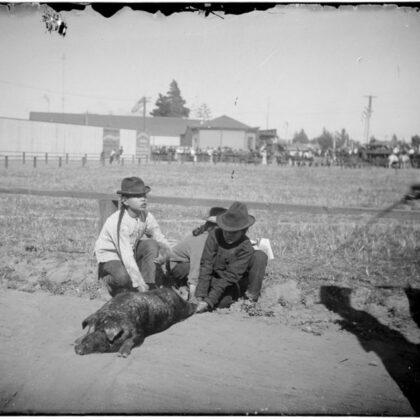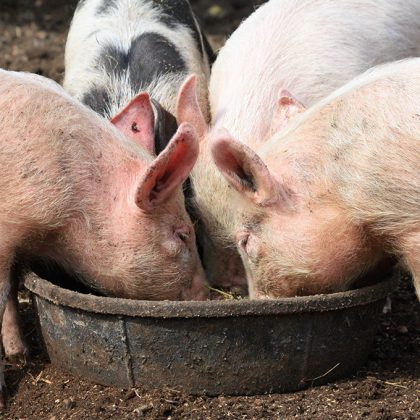Amino acid utilization by growing pigs
The animal article of the month for July is ‘Amino acid utilization and body composition of growing pigs fed processed soybean meal or rapeseed meal with or without amino acid supplementation‘.
In the coming decades, the world population is expected to increase. This increase will result in a growing demand for food products, especially for animal protein. As a result, the balance between plant protein products being used for food, feed or fuel will shift and, consequently, protein sources with a lower quality might increasingly be used in animal feed, for example in growing pig diets.
The lower quality of protein sources may be caused by chemical reactions between sugars and amino acids that occur during processing, e.g., during heat treatment (Maillard reaction). It is important to understand how protein sources with a lower quality are utilized by pigs in order to make optimal use of available feed materials, minimize nitrogen excretion into the environment, and to ensure a high content of lean meat in the carcass. Unfortunately, there is a lack of knowledge on the utilization of amino acids coming from heated protein sources for retention in the body of growing pigs.
In this study we used toasting in the presence of sugars as a model to test effects of (over)processing of feed ingredients. We demonstrated that (over)processing of feed ingredients as soybean meal (SBM) and rapeseed meal (RSM) drastically reduced the utilization and retention of dietary protein in pigs. In addition, we observed small changes in amino acid pattern of body protein. These effects were due to a shortage and imbalance in amino acids absorbed from the digestive tract. As a results, there was a relative surplus of energy from the diet, which is used by the pigs to deposited more fat in their body.
Thus, the pigs grew slower, were fatter, used their diet less efficient, and excreted more nitrogen in the faeces and urine. Subsequently, we demonstrated that supplementation of these diets containing (over)processed SBM or RSM with free amino acids to compensate for the lost amino acids largely restored the growth performance, protein deposition, amino acid pattern of body protein and amino acid utilization, although this effect was not complete for (over)processed SBM. Therefore, adequate amino acid supply largely mitigated the negative effect of (over)processing we just summarised.
In general, this study shows that the use of (over)processed feed materials, e.g., co-products of the human food production may reduce the efficiency of pig production if their nutritive value is not adequately taken into account. It is essential to adequately asses the protein quality of (over)processed feed ingredients and supplement required the amino acids to optimize growth performance, feed utilization, lean meat in the carcass, and reduce nitrogen excretion. This may contribute to a more sustainable food supply and optimal use of available biomass.
This article is freely available for one month:
Authors: T.G. Hulshof, A.F.B. van der Poel, W.H. Hendriks, and P. Bikker
The animal Article of the Month is selected by the Editor-in-Chief and is freely available for one month. View the recent selections









